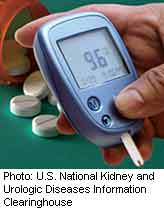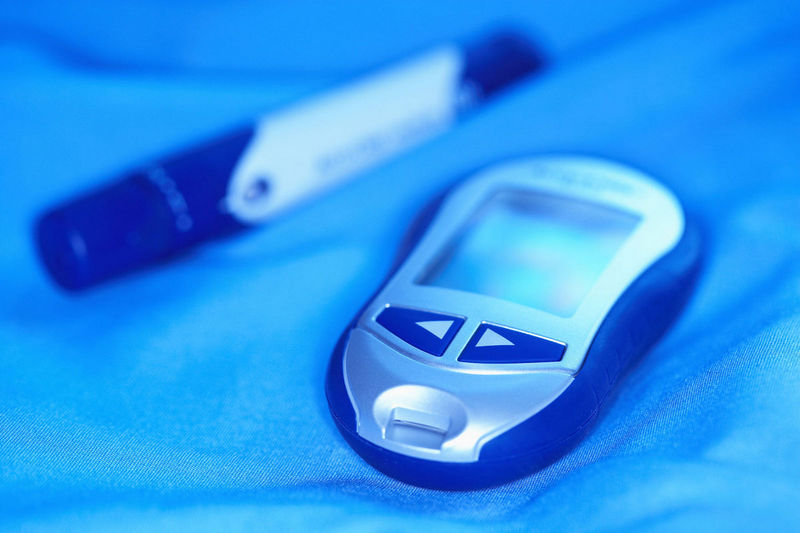
TUESDAY, Nov. 18, 2014 (HealthDay News) — Almost 8 million Americans have diabetes but don’t know it, a new study shows.
That’s despite the fact that about two-thirds of those with undiagnosed diabetes have seen a doctor two or more times in the past year, according to the researchers.
The study also found that among those who were diagnosed with diabetes, only about one-quarter met three important goals for people with diabetes: managing blood sugar, blood pressure and cholesterol levels.
“Out of 28.4 million people with diabetes, more than a quarter don’t know [it],” said study author Dr. Mohammed Ali, an assistant professor of public health at Emory University School of Medicine in Atlanta.
“About 80 percent of those people are linked to a health care provider, and two-thirds are seeing them twice a year or more. So, through whatever means, they aren’t being identified with diabetes,” Ali explained.
The data used in this study wasn’t broken down by diabetes type, but Ali said the vast majority of people with diabetes have type 2 diabetes. And the onset of type 2 diabetes tends to be less obvious, so he believes most of the undiagnosed people are likely people with type 2 diabetes.
Type 2 diabetes is a disorder that causes the body to use the hormone insulin inefficiently, according to the American Diabetes Association (ADA). This is called insulin resistance. The body uses insulin to help process the sugar from food into fuel for the body’s cells. When cells become insulin-resistant, sugar can’t move into the cells and instead, stays in the bloodstream, raising blood sugar levels, according to the ADA.
Symptoms of type 2 diabetes, which may be subtle and come on slowly, include fatigue, blurred vision, slow-healing cuts and scrapes, and the need to urinate more often, according to Dr. Robert Ratner, chief scientific and medical officer for the ADA.
Despite greater awareness in recent years, diabetes remains a major cause of death and disability in the United States. It’s a leading cause of adult-onset blindness, kidney failure and limb amputations, according to the researchers.
Although it’s known that diabetes is a significant and costly health problem, experts probably still don’t have a complete picture of diabetes, Ali and his colleagues suspect.
To get a better idea, they used a concept first developed for addressing the HIV/AIDs epidemic, according to the study. The concept, dubbed “cascade of care,” is a way of looking at how many people are living with a condition and what kind of treatment they’re receiving, according to the researchers.
Using this “cascade of care” on a national survey sample of nearly 30,000 adults, the researchers found that nearly three in 10 people with diabetes remain undiagnosed. They also discovered that 84.5 percent of those undiagnosed adults report that they have a usual health care provider. What’s more, 66.5 percent said they’d had two or more visits in the past year, the study reported.
“The fact that they go to the doctor rings alarm bells. We’re missing out on a whole lot of opportunities,” said Ali. “The answer isn’t simple, but we need to identify where the gaps are. Is it high demand on physicians? Is it a system-wide problem? There are a lot of things that could be going on. It probably won’t be just one specific thing,” he said.
The study also found that among those who were diagnosed, there was room for improvement in their care. Just 64 percent of those diagnosed were meeting their blood sugar goals. About 66 percent had controlled blood pressure (under 140/80 mm Hg), according to the study. And, only 57 percent were meeting the goal of getting their LDL cholesterol (the bad kind) under 100 mg/dL, the researchers found.
When they looked at all three of those goals together, only about one-quarter were meeting their target, the study noted.
“There are a lot of care gaps out there still and they drive [illness] and costs to the health care system,” Ali said.
Ratner said he was happy to see that the researchers took a more patient-centered approach to diabetes management. But he also noted the need for increased diabetes screening.
“We need to be making the diabetes diagnosis. If you miss the diagnosis, there really are adverse consequences. A disease like diabetes is treatable, but it’s only treatable if you’ve been diagnosed,” Ratner explained.
If you haven’t been screened for diabetes, and you’re concerned about your risk factors, Ratner said to ask your doctor to screen you. Some of the risk factors include overweight or obesity, having a family history of the disease and a lack of physical activity, according to the ADA. The risk of type 2 diabetes also increases with age, according to Ratner.
Anyone with symptoms of diabetes should be checked right away, Ratner said.
Results of the study are published in the Nov. 18 issue of the Annals of Internal Medicine.
More information
Check your risk of developing type 2 diabetes with this risk test from the American Diabetes Association.
Copyright © 2025 HealthDay. All rights reserved.

